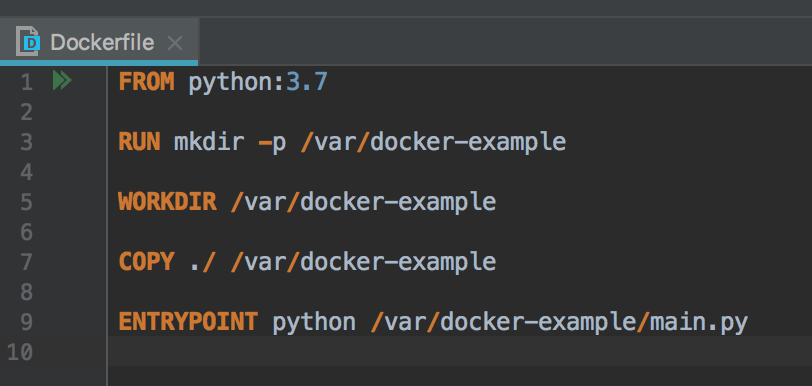
- #Dockstation create container from dockerfile install#
- #Dockstation create container from dockerfile code#
- #Dockstation create container from dockerfile download#
Our example is very simple and thus there is not much of a difference in image sizes but when multi stage builds are used with programming languages like GO, we will see great results with multi stage builds. $ docker imagesĪs we can notice, the size is reduced by 4MB. Following is the size of the final docker image produced. This will leave all the files other than the actual dependencies on the intermediary image and the final image will only contain what is needed to run the file api.py.
#Dockstation create container from dockerfile install#
We install all the dependencies in an intermediary image and copy those dependencies from this intermediary image onto the final image. Now, let us examine the following Dockerfile, which is meant to build the same application as a docker image but this as a multi-stage build.įROM python:3.9.1-alpine AS compile-imageĬOPY –from=compile-image /opt/venv /opt/venv Following is the size of the final image produced using this Dockerfile.
#Dockstation create container from dockerfile code#
Once done, we run the python code in a non root user’s context. In the preceding excerpt, we set up a python virtual environment and install all the requirements as described in requirements.txt. RUN addgroup -S user & adduser -S user -G user –no-create-home Let us review the following Dockerfile, which produces a single stage build. The final image will not contain pieces like the build tools (eg, gcc), which can lead to larger image size as well as increased attack surface. Multi stage builds reduce the size by performing build operations on an intermediate container and keeping only the libraries and output binaries that are needed on the final image. While reducing size is one of the primary benefits, it has positive side effects on security as the final image only contains what is necessary. One of the primary benefits of multi stage builds is to reduce the overall size of the final docker image. Multistage builds are useful to anyone who wishes to optimize Dockerfiles while keeping them easy to read and maintain. Multi-stage docker builds is a common pattern seen especially when writing large Dockerfiles. For instance, environment variables can be found in both images built as well as the containers running. Never put any secrets into these places as they will be available in several stages. In some cases, developers leave SSH keys for Docker to pull source code from repositories during the build phase. So, it is recommended to copy only what is needed as shown in the following excerpt.Īs we can see in the preceding excerpt, we are copying a single file instead of copying Avoid building secrets into imagesĮnvironment variables, args, hardcoded credentials are some of the common patterns seen in Docker containers. It is also possible that we may copy files that are not needed on a container, Dockerfile for instance. This can be risky especially if the current directory has any sensitive files such as secrets or backup files.

One commonly seen practice with COPY command is to copy everything from the current directory as shown in the following excerpt.Įverything available in the local directory, will be copied into the container. COPY only what is neededĬOPY command can be used to get content onto the image. This can lead to unwanted behaviour especially if the URL used loads content from an untrusted source.
#Dockstation create container from dockerfile download#
It can be used to download content from a URL during build time. While COPY is clearly for copying files from a local directory to the container, ADD comes with one additional feature.

Avoid the use of ADD, use COPY insteadĭocker provides ADD and COPY commands to achieve a similar goal – Getting content into the container.

Uid=100(user) gid=101(user) groups=101(user)Īs we can observe in the preceding excerpt, we got a shell as a non root user named user as specified in the Dockerfile. When we run a container using this docker image and get a shell, we should see a low privileged user instead of a root user. RUN addgroup -S user & adduser -S user -G userīuild the image using the following command. The following Dockerfile shows how the alpine image is modified to create a new user and use this low privileged user for all the operations within the container. Even though these root accounts on the docker containers do not come with all the capabilities that a Linux root user has, it is recommended to use a non root user within a container. When a container is started from docker images, a root account will be available within the container by default.


 0 kommentar(er)
0 kommentar(er)
